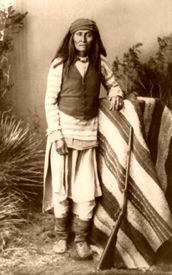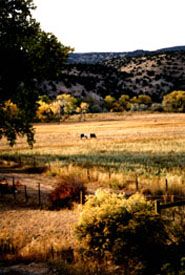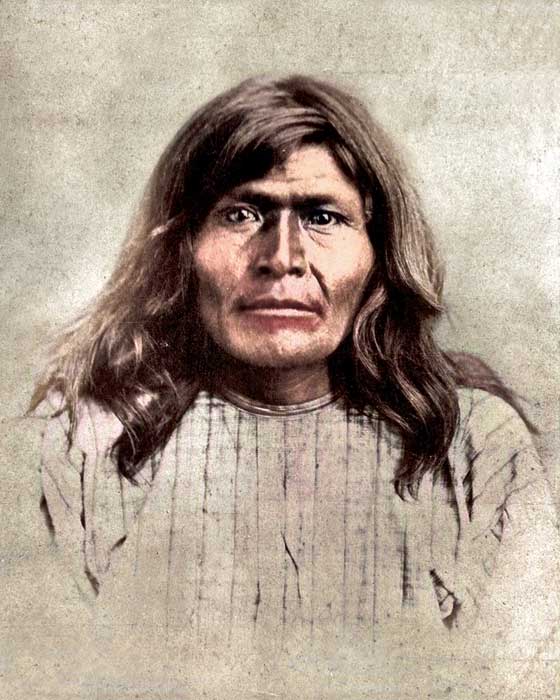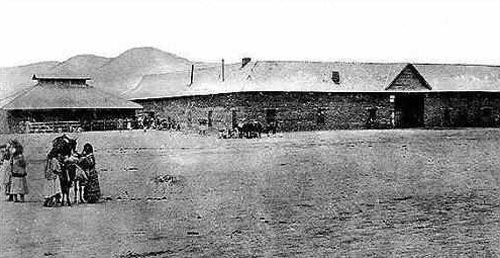Known as Bidu-ya or Beduiat to his Apache people, Victorio was a warrior and chief of the Chihenne band of the Chiricahua Apache in what is now New Mexico.
Born on the Black Range of New Mexico around 1825, Victorio was raised as a member of the Chihenne Apache. Though little is known of his early life, it is said that he may have been part Mexican. His sister was the famous woman warrior, Lozen, or “Dextrous Horse Thief.”
By the early 1850s, he was considered a Chief in his band. In his twenties, he began to ride with Geronimo, Nana, and other Apache leaders, making numerous raids into northern Mexico. In 1862, he joined with Mangas Coloradas in making raids into Mexico and upon the encroaching white settlers.

Mangas Coloradas, 1884.
When Mangas Coloradas met with the U.S. Army in January 1863, under a flag of truce, instead of maintaining the alleged peaceful negotiations, the army took Mangas Coloradas prisoner and later executed him on January 18. This, of course, very much angered not only Victorio but also Cochise, another influential leader.
Afterward, Victorio formed a band of Eastern Chiricahua and Mescalero, numbering some 300, and retaliated against the Army. Those military officers who fought against Victorio regarded him as a sound tactician and a leader of men. However, by 1869, Victorio and his band had been subdued and convinced to move to a new reservation near Ojo Caliente, New Mexico. In 1869, they were settled near Fort Craig, New Mexico, waiting to complete the reservation.

Ojo Caliente area today
The following year, Victorio and 500 Mimbrenos, Mogollones, and Mescaleros were assigned to the Ojo Caliente Reservation some 15 miles northwest of present-day Monticello.
The area, claimed by Victorio to be their ancestral homeland, initially served the Apache well, and generally, they were content. The population on the reservation grew to more than 3,000. However, the rations provided by the government were not substantial enough to feed them all, and they soon started to stray from the reservation, foraging on their own. Before long, they were blamed for every depredation in the surrounding area, most of which were actually the work of Mexican bandits. In August 1871, the Army recommended the removal of the Apache from Ojo Caliente to the Tularosa Valley, some seventy miles to the northwest.
By April 1872, the new reservation was established, and the following month the first Indians began to move. By June, about 450 Apache, including Victorio, had arrived, but the rest had simply taken off, many of them joining with their Chiricahua cousins in Arizona. In the summer of 1874, Tularosa was abandoned, and the remaining Apache were allowed to return to Ojo Caliente.
The Ojo Caliente Reservation was officially closed, and in May 1877, Taza, son, and successor to the deceased Cochise, began to lead his people to Arizona. The reservation conditions at San Carlos were terrible. In early September, Victorio, with about 300 followers, fled the San Carlos Reservation and began three years of intermittent attacks in Mexico, Texas, and New Mexico. In Texas, he was hotly pursued by Buffalo Soldiers of the 9th and 10th Cavalries and Texas Rangers.
In April 1880, Victorio was said to have led his band in the “Alma Massacre,” where several settlers’ homes were raided and several people killed. As a result, U.S. Army troops were sent out in force from Fort Bayard, New Mexico, to capture Victorio and his band. The soldiers outpaced Victorio to the water holes in the Sierra Diablo Mountains, and after two unsuccessful attempts to reach water, the Apache retreated into Mexico.
On October 14, 1880, Victorio and his people were surprised by Mexican troops who killed Victorio and his warriors. Only women and children survived the confrontation and were held prisoners in Chihuahua City for the next several years.
© Kathy Alexander/Legends of America, updated January 2022.
Also See:
Indian Wars in American History
Lozen – Apache War Woman & Prophet
Native Americans – First Owners of America


